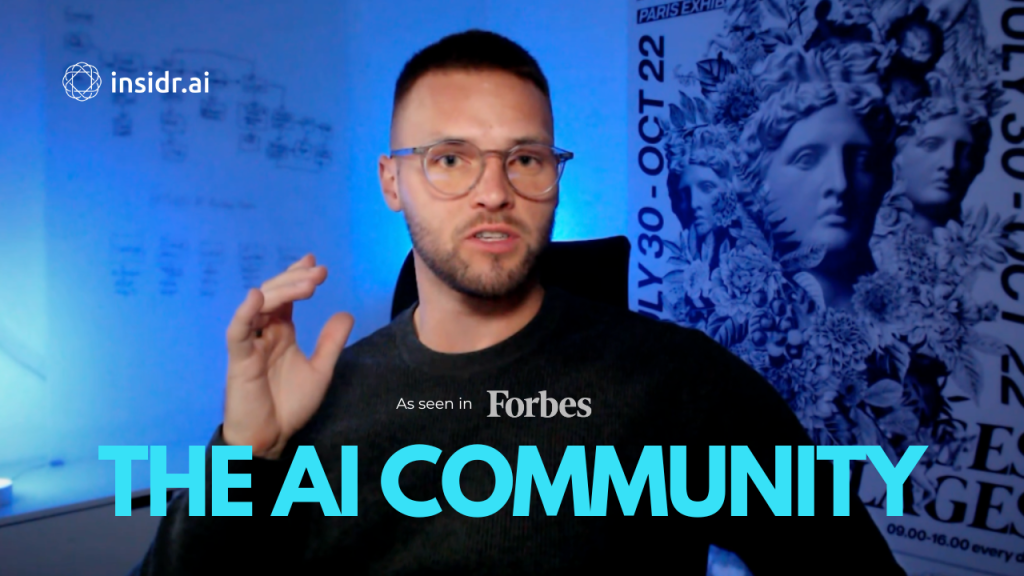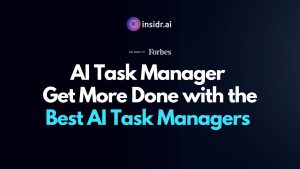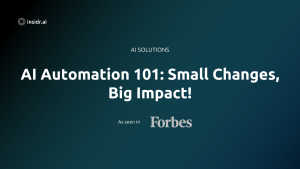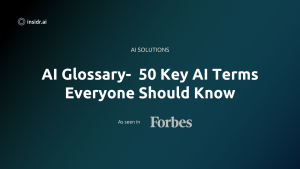Artificial Intelligence (AI) is becoming a bigger part of our daily lives, and it’s important to understand the basics.
Whether it’s the voice assistant on your phone or the recommendation engine suggesting your next favorite show, AI is at work behind the scenes.
But what exactly is AI, and why does it matter? In this guide, we’ll break down the basics of AI in simple terms, helping you understand how it works and why it’s so important in today’s world.

AI Solutions
AI-proof your business by integrating the right tools and systems for your needs. Discover solutions and products.
What is Artificial Intelligence?
Artificial Intelligence, often shortened to AI, is the ability of machines to perform tasks that typically require human intelligence. These tasks include learning from experience, understanding language, recognizing patterns, and making decisions.
Imagine a robot that can sort your laundry or a computer that can diagnose diseases from medical images—that’s AI at work. The key idea is that AI allows machines to “think” or “learn” in ways similar to humans, though they do it through data and algorithms.
Importance of AI in Today's World
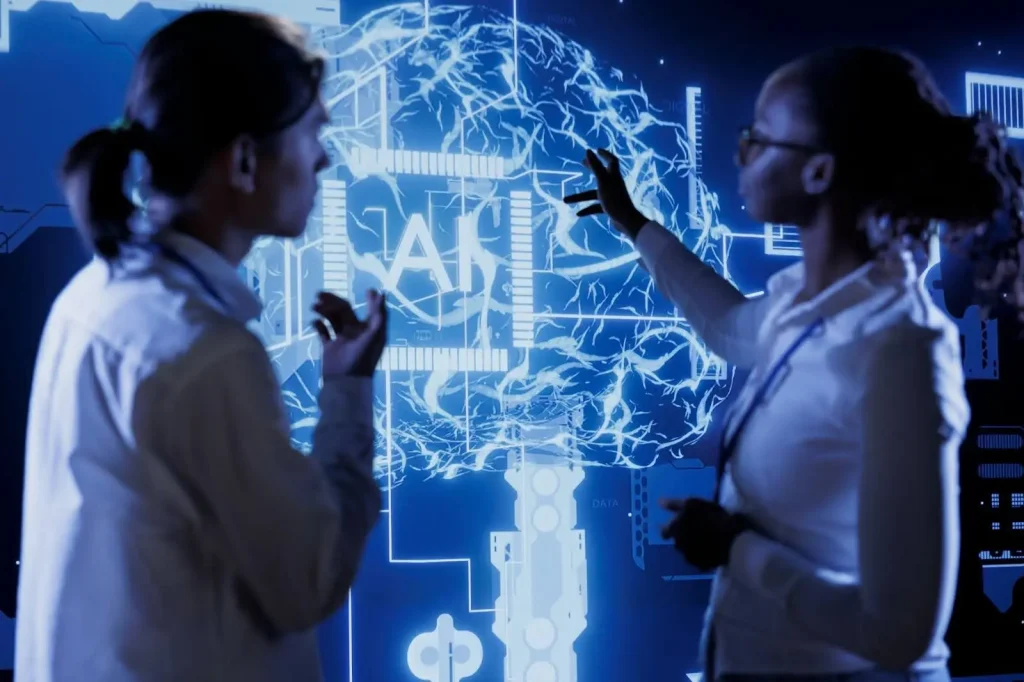
AI has become a critical tool in many industries, making processes faster, more efficient, and sometimes even more accurate than humans.
For example, AI helps doctors diagnose diseases more quickly, assists financial analysts in predicting market trends, and even powers the self-driving cars we see on the roads today.
As AI continues to evolve, it’s expected to take on even more roles, influencing everything from business decisions to how we interact with technology daily.
But don’t worry that AI may take your job—this is unlikely if you keep up with AI, continuously learn about it, and learn how to use it. Instead of a threat, AI can become an opportunity for you to grow and excel in your career or business.
The Impact of AI Across Industries
Artificial Intelligence is transforming how industries operate, making them smarter and more efficient. Let’s look at some examples of how AI is being used today.
Healthcare
AI is helping doctors and nurses by analyzing medical data to provide quicker and more accurate diagnoses. For instance, AI systems can scan medical images like X-rays and MRIs to detect conditions like tumors or fractures that might be missed by the human eye.
Finance
In finance, AI is used to predict stock market trends, manage investments, and detect fraudulent activities. Banks and financial institutions rely on AI algorithms to analyze vast amounts of data and make decisions in real-time, which helps in managing risks and improving customer services.
Retail
AI is revolutionizing the retail industry by providing personalized shopping experiences. When you shop online and see recommendations for products you might like, that’s AI at work, analyzing your past behavior to predict what you might want to buy next.
The Growing Influence of AI in Decision-Making and Automation
AI is not just helping industries operate better; it’s also becoming a key player in decision-making. Companies use AI to analyze data and come up with strategies, reducing the time and effort needed to make important decisions.
In manufacturing, AI-powered robots work alongside humans, automating repetitive tasks, improving efficiency, and allowing human workers to focus on more complex tasks.
How AI is Getting Smarter?
AI technology is advancing in stages, each with new capabilities.
- Artificial Narrow Intelligence (ANI): AI started with narrow intelligence, meaning it could handle one specific task very well, like recognizing faces in photos or understanding simple voice commands.
- Artificial General Intelligence (AGI): We’re moving toward a level where AI can think more broadly, similar to a human, learning and adapting to handle many different tasks across various fields.
- Artificial Superintelligence (ASI): Looking ahead, AI could become more intelligent than humans, solving problems we can’t solve today, possibly leading to a future called the “singularity.”
Core Concepts of Artificial Intelligence
Before we dive deeper, let’s get a quick overview of the foundational concepts in AI. Understanding these basics will make it easier to grasp how AI works and why it’s so powerful.
Algorithm
An algorithm is a set of rules or instructions given to a computer to help it solve a problem or complete a task. Think of an algorithm as a recipe that tells the computer exactly what steps to take to achieve a desired outcome.
For example, when you search for something on Google, algorithms are at work behind the scenes, quickly sorting through billions of web pages to find the ones most relevant to your query.
AI Models
An AI model is like a brain for AI systems. It’s a program that has been trained using data to perform specific tasks, such as recognizing faces in photos or translating languages. There are different types of AI models:
- Supervised Learning Models: These models learn from labeled data. For instance, a model might be trained with pictures labeled “cat” or “dog” until it can identify cats and dogs in new pictures on its own.
- Unsupervised Learning Models: These models find patterns in data without being given specific instructions. They might be used to group customers with similar shopping habits together.
- Reinforcement Learning Models: These models learn by trial and error, much like how humans learn from mistakes. They receive feedback in the form of rewards or penalties to improve their performance over time.
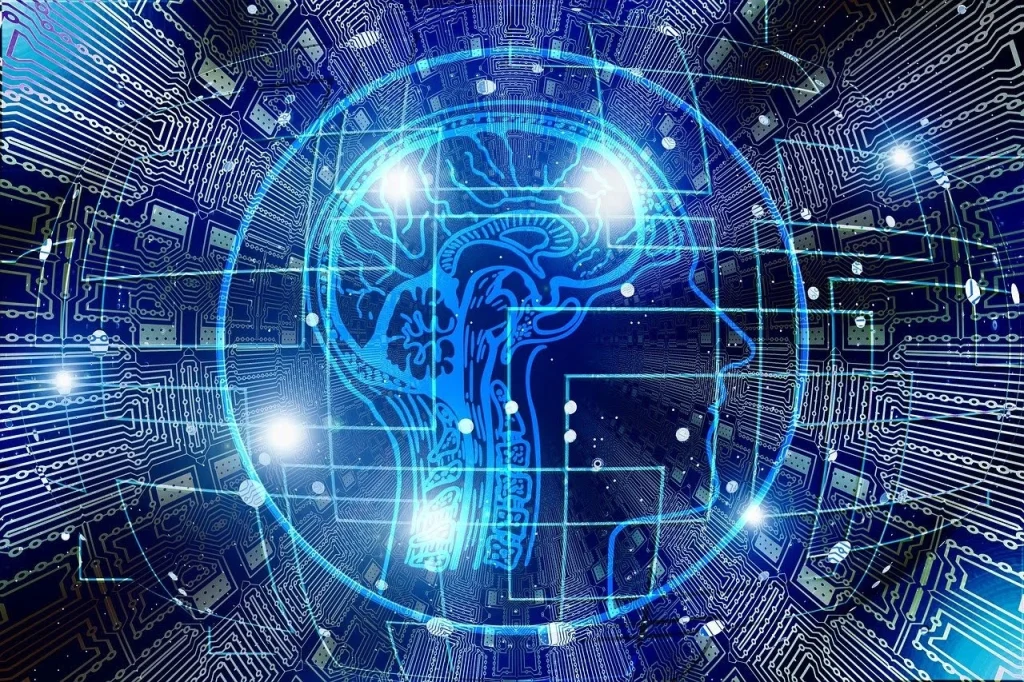
AI System
An AI system refers to the complete setup that includes algorithms, models, and other tools working together to perform tasks.
While an AI model is the “brain” making decisions, the AI system is the whole “body,” including the hardware and software that enables the AI to function.
Difference Between AI System and AI Model
- The AI model is the specific program trained to perform tasks, like identifying objects in images.
- The AI system is the larger framework that includes the AI model, the data it processes, and the tools it uses to interact with the world.
Machine Learning (ML)
Machine Learning (ML) is a key part of AI that focuses on teaching machines to learn from data and improve over time without being explicitly programmed for each task. There are different types of machine learning approaches, each with its own methods and applications.
Supervised Learning
Supervised learning is the most common type of machine learning. In this approach, the model learns from a labeled dataset, where the correct output is already known. The goal is to make accurate predictions for new, unseen data.
Key Algorithms
- Linear Regression: Used for predicting a continuous outcome (e.g., predicting house prices).
- Decision Trees: A model that makes decisions based on asking a series of questions, leading to a final outcome.
- Support Vector Machines (SVM): A classifier that finds the best boundary to separate different classes in the data.
Real-World Applications
- Email Filtering: Supervised learning helps in classifying emails as spam or not spam.
- Recommendation Systems: It powers systems that suggest products or content based on user preferences, like what you see on Netflix or Amazon.
Unsupervised Learning
Unsupervised learning works with data that doesn’t have labeled outputs. The model tries to find hidden patterns or groupings within the data.
Key Algorithms
- Clustering (e.g., K-Means): Groups similar data points together without predefined categories.
- Principal Component Analysis (PCA): Reduces the dimensionality of the data, making it easier to visualize or process.
Practical Examples
- Customer Segmentation: Businesses use unsupervised learning to group customers with similar buying habits for targeted marketing.
- Anomaly Detection: Identifying unusual data points that don’t fit the general pattern, like detecting fraudulent transactions in banking.
Reinforcement Learning
Reinforcement learning is a bit different from the other two. It involves training a model to make a sequence of decisions by rewarding it for good choices and penalizing it for bad ones. This approach mimics how humans learn from trial and error.
Types of Reinforcement Learning
- Model-Free: The agent learns directly from the environment without any model, adjusting its actions based on the rewards or penalties it receives.
- Model-Based: The agent uses a model of the environment to plan and make decisions.
Use Cases
- Robotics: Teaching robots to perform tasks, like navigating a room without bumping into objects.
- Game AI: Reinforcement learning is behind the smart behaviors of opponents in video games, where the AI adapts and improves over time.
Deep Learning
Deep Learning is a specialized subset of machine learning that involves neural networks with many layers. These layers allow the model to automatically learn complex patterns from large amounts of data, making it incredibly powerful for tasks like image and speech recognition.
Deep Learning
Deep learning has some further concepts that help it process information in more advanced ways. Let’s explore a few key ideas.
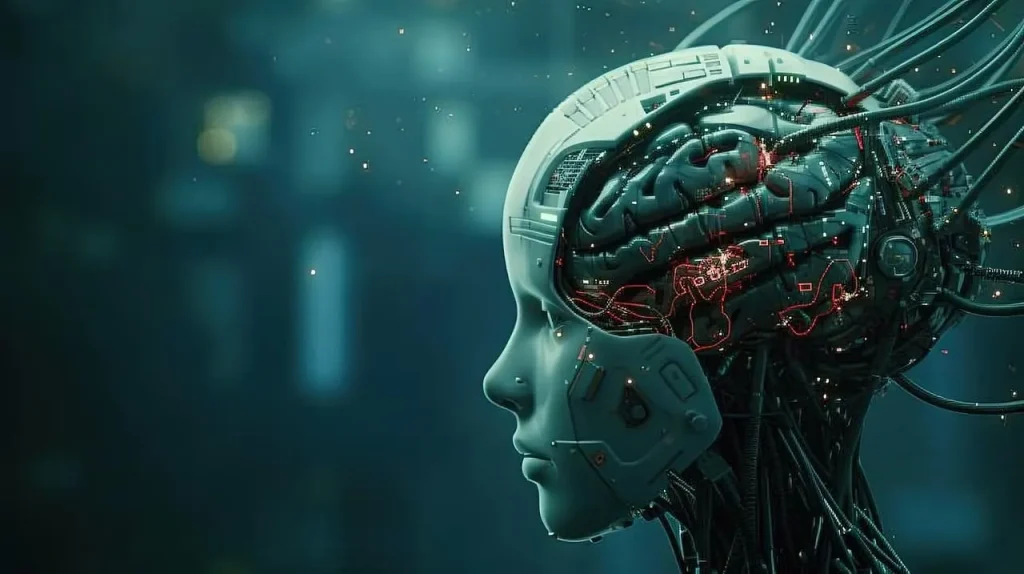
Neural Networks
Neural networks are the backbone of deep learning. They are inspired by the structure of the human brain, consisting of interconnected nodes (neurons) that work together to process information. Each layer in a neural network captures different levels of detail from the data, with deeper layers identifying more complex features.
The Role of Layers in Deep Learning
- Input Layer: Takes in the raw data.
- Hidden Layers: Process the data, with each layer extracting more complex features.
- Output Layer: Produces the final result, like identifying what an image shows or predicting a value.
Convolutional Neural Networks (CNNs)
CNNs are a type of neural network specifically designed for processing images and videos. They use a technique called convolution, where the model scans small parts of the image and learns to detect features like edges, textures, and shapes.
CNNs are essential for tasks like facial recognition, object detection, and even powering the vision systems in self-driving cars.
Recurrent Neural Networks (RNNs)
RNNs are designed for processing sequences of data, making them well-suited for tasks where the order of the information matters, such as time-series analysis or language processing.
- Time-Series Data: RNNs are used in financial forecasting, where the order of past stock prices influences predictions.
- Natural Language Processing (NLP): RNNs help in understanding and generating human language, powering applications like translation and speech recognition.
Transformers
Transformers are a newer type of neural network that has made significant advancements in NLP. Unlike RNNs, transformers don’t process data in order. Instead, they look at the entire data set at once, which makes them faster and more effective for tasks like language translation and text generation.
Transformers are behind some of the most powerful language models today, like GPT and BERT, which are used in chatbots, virtual assistants, and more.
Common Machine Learning Tasks
Machine learning can do many things, from predicting what you might buy next to recognizing your voice when you talk to your phone.
These tasks are how machines learn to perform specific actions based on the data they’ve been given. Here are some of the most common tasks in machine learning:
Prediction
One of the simplest yet most powerful tasks. Prediction models use past data to make informed guesses about the future. For example, an online retailer might predict which products you’re likely to buy based on your previous shopping habits.
Classification
This task involves sorting data into different categories. For example, an email service might classify your incoming messages as “spam” or “not spam,” helping you keep your inbox clean.
Speech Recognition
This task converts spoken language into text. It’s the technology behind voice-activated assistants like Siri and Alexa, which can understand and respond to your spoken commands.
Image Recognition
Machines can now recognize objects, faces, and scenes in images. This is used in everything from tagging friends in photos on social media to powering self-driving cars that need to understand their surroundings.
Recommendation
Recommendation systems suggest products, movies, or music based on what you’ve liked before. Netflix, for example, uses this to recommend shows you might enjoy.
Anomaly Detection
This task involves identifying unusual data points that don’t fit the general pattern, which is useful in fraud detection or monitoring systems for unusual behavior.
Advanced AI Techniques
As AI continues to develop, it moves beyond basic tasks and starts to perform more complex and creative functions.
These advanced AI techniques are pushing the boundaries of what machines can do, from generating new content to understanding human language in a deeper way.
Generative AI
Generative AI refers to AI systems that can create new content, whether it’s text, images, music, or even entire videos. The significance of generative AI lies in its ability to produce original outputs that were not directly programmed by humans.
This opens up new possibilities in creative industries, where AI can assist artists, writers, and designers by generating fresh ideas or even completing tasks.
Use Cases
- Text Generation: AI can write articles, stories, or even poetry by learning from existing texts. For example, AI models can draft emails or suggest writing ideas.
- Image Creation: Artists use generative AI to create unique images based on a set of parameters, which can be useful in digital art, advertising, and design.
- Music Composition: AI can compose music by analyzing patterns in existing songs, creating new melodies or even entire compositions that sound original.
Generative Adversarial Networks (GANs)
Generative Adversarial Networks (GANs) are a type of generative AI where two neural networks work together to create content. One network generates the content (like an image), and the other tries to detect if the content is real or generated. This process helps improve the quality of the generated content over time.
Applications in Creative AI
- GANs are used to create realistic images, such as generating photos of people who don’t actually exist.
- They are also used in creating art, where the AI can mimic the styles of famous artists or even invent new ones.
- In the gaming industry, GANs help in generating realistic game environments and characters.
Natural Language Processing (NLP)
Natural Language Processing (NLP) is the branch of AI that focuses on understanding and generating human language. It allows machines to comprehend text, speech, and even complex language structures, making it possible for AI to interact with humans in a more natural and intuitive way.
Key NLP Tasks
- Sentiment Analysis: NLP can determine the sentiment behind a piece of text, such as whether a customer review is positive or negative.
- Language Translation: Tools like Google Translate use NLP to convert text from one language to another accurately.
- Summarization: NLP can automatically summarize long documents or articles, making it easier to digest large amounts of information quickly.
Large Language Models (LLMs)
Large Language Models (LLMs) like GPT and BERT are advanced NLP models trained on vast amounts of text data. They are capable of understanding context, generating human-like text, and even carrying out conversations that feel natural.
Use Cases
- Chatbots: LLMs power many of the chatbots you interact with online, helping businesses provide customer support and answer questions.
- Virtual Assistants: Tools like Siri and Alexa use LLMs to understand and respond to voice commands, making them essential in smart home technology.
- Content Creation: LLMs assist in writing articles, creating marketing content, and even generating code, helping professionals work more efficiently.

Computer Vision
Computer Vision is the field of AI that enables machines to interpret and make decisions based on visual data. By analyzing images and videos, computer vision allows AI to recognize objects, understand scenes, and even react to visual stimuli.
Applications
- Facial Recognition: Used in security systems and smartphones to identify and verify individuals.
- Object Detection: Helps in detecting and classifying objects in images, which is crucial for applications like automated surveillance and inventory management.
- Autonomous Vehicles: Computer vision allows self-driving cars to understand their surroundings, identify obstacles, and navigate safely.
Robotics and AI
The integration of AI in robotics has transformed how robots operate, making them more intelligent and capable of performing tasks autonomously. AI-driven robots can learn from their environment, adapt to changes, and even work alongside humans in various settings.
Applications in Industries
- Manufacturing: AI robots assemble products, handle materials, and even perform quality checks, increasing efficiency and reducing human error.
- Healthcare: Robots assist in surgeries, provide patient care, and help in managing hospital logistics.
- Service Industries: In hotels and restaurants, robots are used for customer service, delivering items, and even cooking meals.
AI Ethics and Societal Impact
As AI technology continues to advance, it’s important to consider not only the benefits but also the ethical implications and societal impacts of AI. These concerns are vital as AI increasingly becomes integrated into various aspects of our lives, influencing everything from business decisions to personal privacy.
AI Ethics
AI ethics involves guiding principles and standards that aim to ensure AI technologies are developed and used responsibly. The goal is to create AI systems that are fair, transparent, and aligned with human values.
Key Terminology in AI Ethics
- Alignment: Ensuring that AI systems behave in ways that are consistent with human goals and values.
- Responsible AI: The practice of designing, developing, and deploying AI with consideration for its impact on society and the environment.
- Explainability: The ability to understand and explain how an AI system makes decisions, which is crucial for building trust.
- Black Box: A term used to describe AI systems whose decision-making processes are not transparent or easily understood by humans.
- Singularity: A theoretical point in the future when AI surpasses human intelligence, leading to unpredictable societal changes.
Bias in AI
Bias in AI occurs when AI algorithms make unfair or prejudiced decisions due to biases in the data they are trained on. This can lead to discriminatory outcomes in areas such as hiring, lending, and law enforcement.
Strategies to Mitigate Bias in AI Systems
- Diverse Data: Ensuring the training data includes diverse and representative samples to reduce bias.
- Regular Audits: Conducting ongoing audits of AI systems to detect and address biases.
- Algorithmic Transparency: Making AI algorithms transparent so stakeholders can understand and correct biased decision-making processes.
Transparency and Explainability
Transparency in AI means making the inner workings of AI systems visible and understandable to users. This is important for building trust and ensuring that AI systems make decisions that align with human values.
Importance of Transparent AI Models
- Trust: Transparent models help users trust AI decisions by making it clear how and why a decision was made.
- Accountability: When AI systems are transparent, it’s easier to hold them accountable for their decisions, particularly in sensitive areas like healthcare and law.
Techniques to Make AI Decisions Understandable
- Simplified Models: Using simpler models that are easier to interpret, even if they are less powerful.
- Visualization Tools: Providing visual explanations of how AI reaches its decisions, helping users see patterns and understand the AI’s reasoning.
AI and Job Displacement
The impact of AI on employment is a major concern, with many fearing that AI could lead to significant job losses. According to recent studies, advances in AI could affect about 15% of the global workforce between 2016 and 2030, potentially resulting in the loss of 400 million jobs globally.
However, AI is also expected to create around 97 million new jobs, particularly in sectors like healthcare, STEM, and digital services. The key is to adapt and develop new skills that complement AI technologies.
How to Prepare for an AI-Driven Job Market?
To thrive in an AI-driven job market, it’s essential to stay updated with AI technology and continuously integrate AI into your work. Learning to use AI tools not only helps you remain relevant but can also ease job responsibilities and improve efficiency.
Visit Insidr.ai for the latest AI tools that you can integrate into your business or daily tasks. This platform can help you stay ahead by offering resources and tools to harness the power of AI effectively. Keep learning and adapting, and you can turn AI into an opportunity rather than a threat.
The Future of AI

Recent research indicates that AI is poised to become even more integrated into our daily lives and industries, with significant advancements on the horizon.
For instance, generative AI is seeing widespread adoption, with 65% of organizations now using it regularly, particularly in areas like marketing, sales, and product development.
This growing integration shows AI’s potential to generate significant value across various sectors, driving efficiency and innovation.
Emerging Trends in AI
As we look forward, several exciting trends are emerging in the field of AI:
Quantum AI
Quantum computing is moving from theory to practical application, promising to revolutionize data processing with its ability to handle complex problems that are beyond the reach of classical computers. This will lead to monumental leaps in AI capabilities, especially in areas requiring high-level computation.
AI Legislation
With AI’s rapid growth, governments worldwide are focusing on developing comprehensive AI policies. These regulations aim to foster technological advancements while safeguarding against potential risks associated with AI.
Ethical AI
As AI systems increasingly influence decisions in areas like healthcare and finance, there is a growing emphasis on ensuring these systems are transparent, fair, and accountable. The rise of Ethical AI reflects the need for rigorous standards to guide AI development and usage.
Augmented Working
AI is becoming a vital ally in various professions, enhancing human capabilities. Whether it’s surgeons using AI for diagnostics or developers getting AI-powered code suggestions, this trend represents the symbiosis of human skill and AI power.
Next-Generation Generative AI
Generative AI continues to evolve, with new tools and applications emerging that push the boundaries of creativity and productivity. This trend is set to transform how businesses and individuals create and innovate.
AI and Human Collaboration
AI is increasingly seen as a partner in enhancing human capabilities. In creative industries, for example, AI assists artists, writers, and musicians by generating ideas or even completing complex tasks that would be time-consuming for humans alone.
This collaboration between AI and humans not only boosts productivity but also opens up new possibilities for innovation and creativity.
Conclusion
In this blog, we’ve explored the fundamentals of AI, from its core concepts and common tasks to its ethical implications and societal impact. We’ve also looked at how AI is transforming industries and what the future holds.
As AI continues to evolve, staying informed and adapting to these changes is crucial. I encourage you to keep up with the latest AI developments and explore the best AI tools available. For the latest and most effective AI tools, visit Insidr.ai and stay ahead in this rapidly changing landscape.
Discover More AI Tools
Join the free AI community to get free AI resources, join discussion, and learn how to use AI.
To subscribe to the newsletter and receive updates on AI, as well as a full list of 500+ AI tools, click here.




